For Iranian artist Arghavan Khosravi, depicting hair in her paintings has become charged with emotion. She posted a video on Instagram in early October that showed her sweeping a paintbrush across the canvas to create fine strands. “These days when I’m painting hair, I’m filled with anger and hope. More than ever,” she wrote in the caption.
She added the hashtag #MahsaAmini to the post, the name of the 22-year-old woman who died in Iran’s capital Tehran in September after being arrested by the country’s morality police for allegedly not wearing her hijab properly. Amini’s death has since catalyzed nationwide protests — many of which have seen young women and girls defiantly cutting their hair — and her name has become a rallying cry on social media.
Khosravi grew up in a secular Tehran household in the aftermath of the 1979 Iranian Revolution as a new theocratic regime instated oppressive rules for women, including making the hijab, or headscarf, mandatory in public.
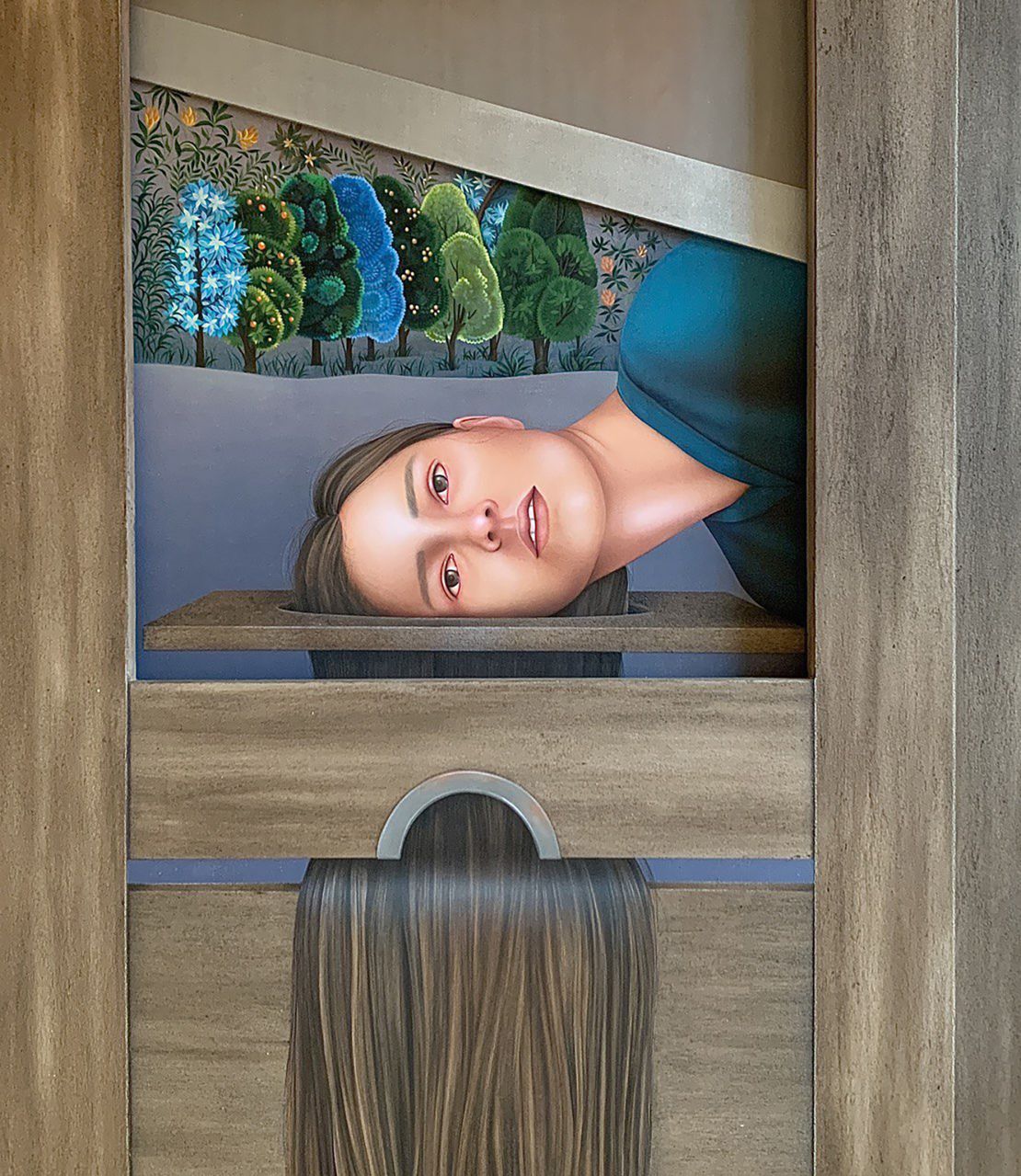
“At a very early age I realized that there is this contrast between your private spaces — your home — and then public spaces. At home you are free to do whatever you want,” Khosravi said in a phone call from Stamford, Connecticut. “You learn to navigate this dual life.”
Khosravi had her own encounter with the morality police in 2011 and was temporarily detained, she explained. Based in the US since moving in 2015 to study painting, the former graphic designer uses long, flowing hair as a symbol in her metaphor-laden works. Her surreal, dreamlike portraits of women, which appear on multi-paneled surfaces that resemble architectural facades, were influenced by the flattened perspectives and meticulous details of Persian miniature paintings.
Some of her latest works are currently on view around Rockefeller Center in New York City through mid-November, while her first solo museum show recently ended at New Hampshire’s Currier Museum.
Rich symbolism
The women in Khosravi’s paintings are often depicted as bound by strings or concealed behind walls, flowers or hands in what she describes as a struggle for autonomy. Yet, they possess a commanding presence. She contrasts cords and shackles with expressions of freedom such as doves. With lush colors and areas of radiance in which her subjects’ body parts seem to glow, Khosravi’s artworks aren’t somber, but luminous.
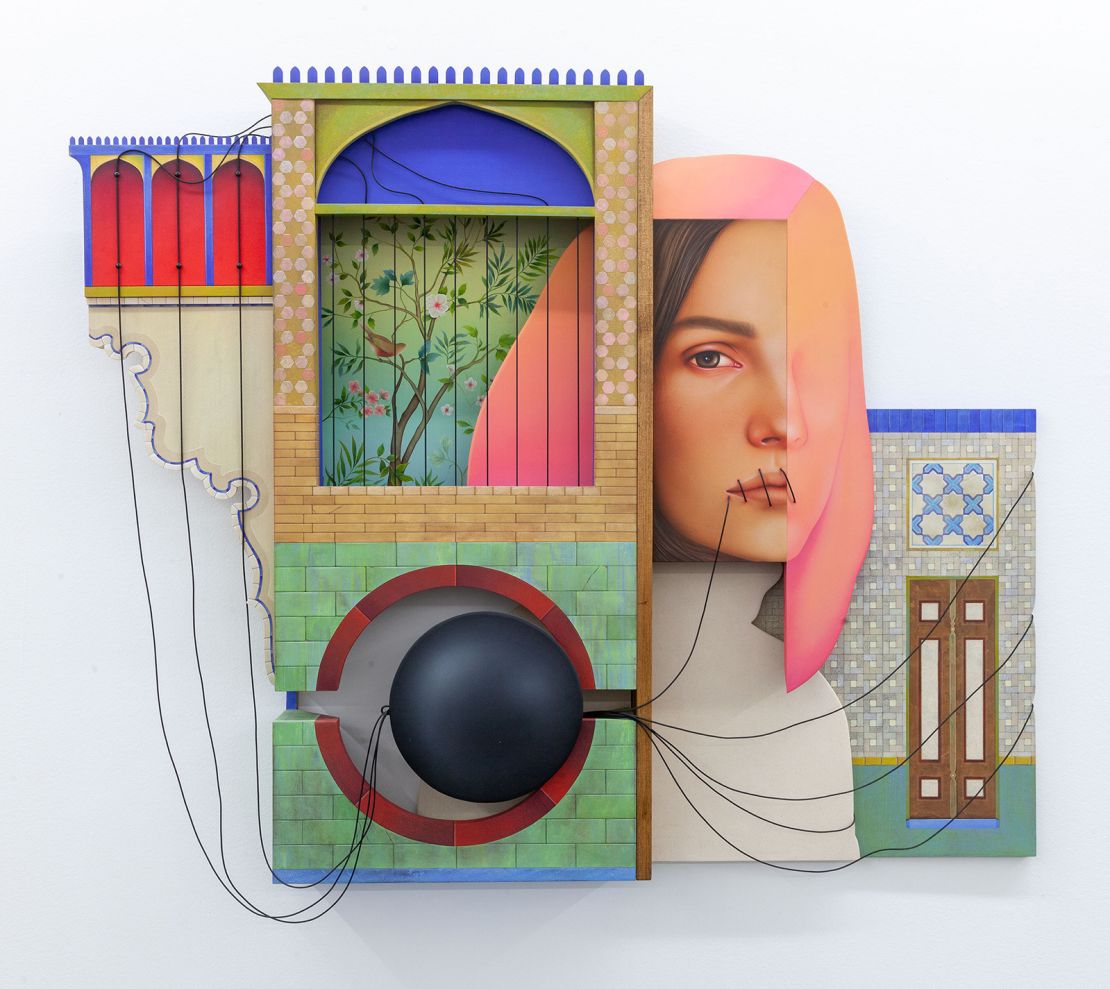
“Contrast and contradiction is one of the main concepts that I’m exploring in my work,” she said, pointing to the dichotomies of many Iranian women’s lives. Red or black threads are a recurring motif in her paintings — they appear looped around her figures’ fingers or wrists, sewn over their closed mouths or emerging from their eyes — sometimes as painted lines, sometimes as physical strings hanging from the canvas.
“I was thinking about my memories from Iran,” she said. “There are a lot of red lines that are imposed on us by the government.”
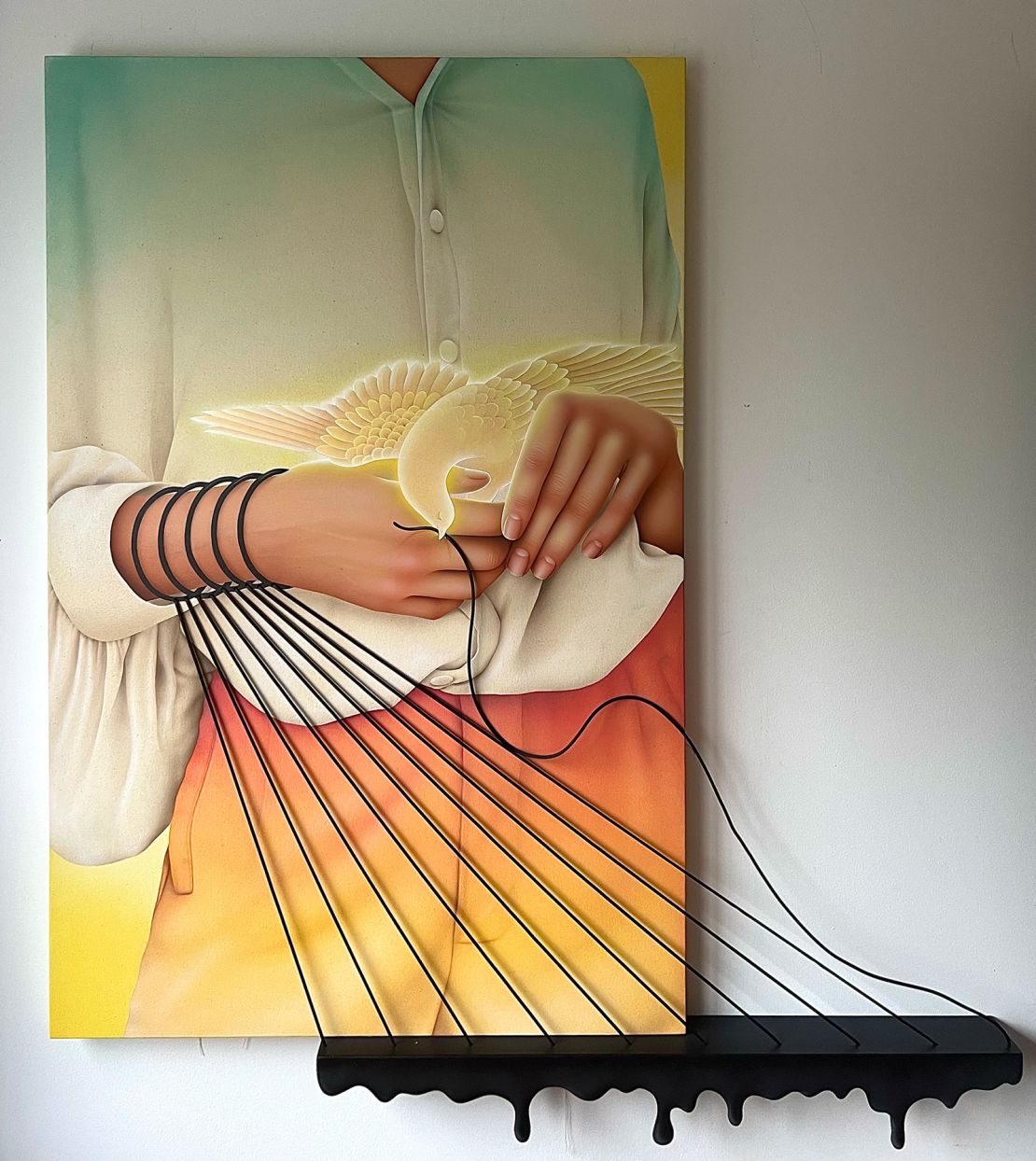
Since protests broke out in September, Khosravi has watched hair become a powerful symbol as women cut theirs, in protest or in solidarity, and burned their hijabs in the streets.
“Women cutting their hair is an ancient Persian tradition… when the fury is stronger than the power of the oppressor,” tweeted Wales-based writer and translator Shara Atashi in late September. “The moment we have been waiting for has come. Politics fueled by poetry.”
Real-world reflections
In “Cover your hair!”, a painting that Khosravi recently reshared on social media, a woman hangs from her torso by a long piece of red fabric, her long, dark hair wrapped tightly in the material. Stylized Persian soldiers on horses loop threads around her body in a poignant image of suppression.
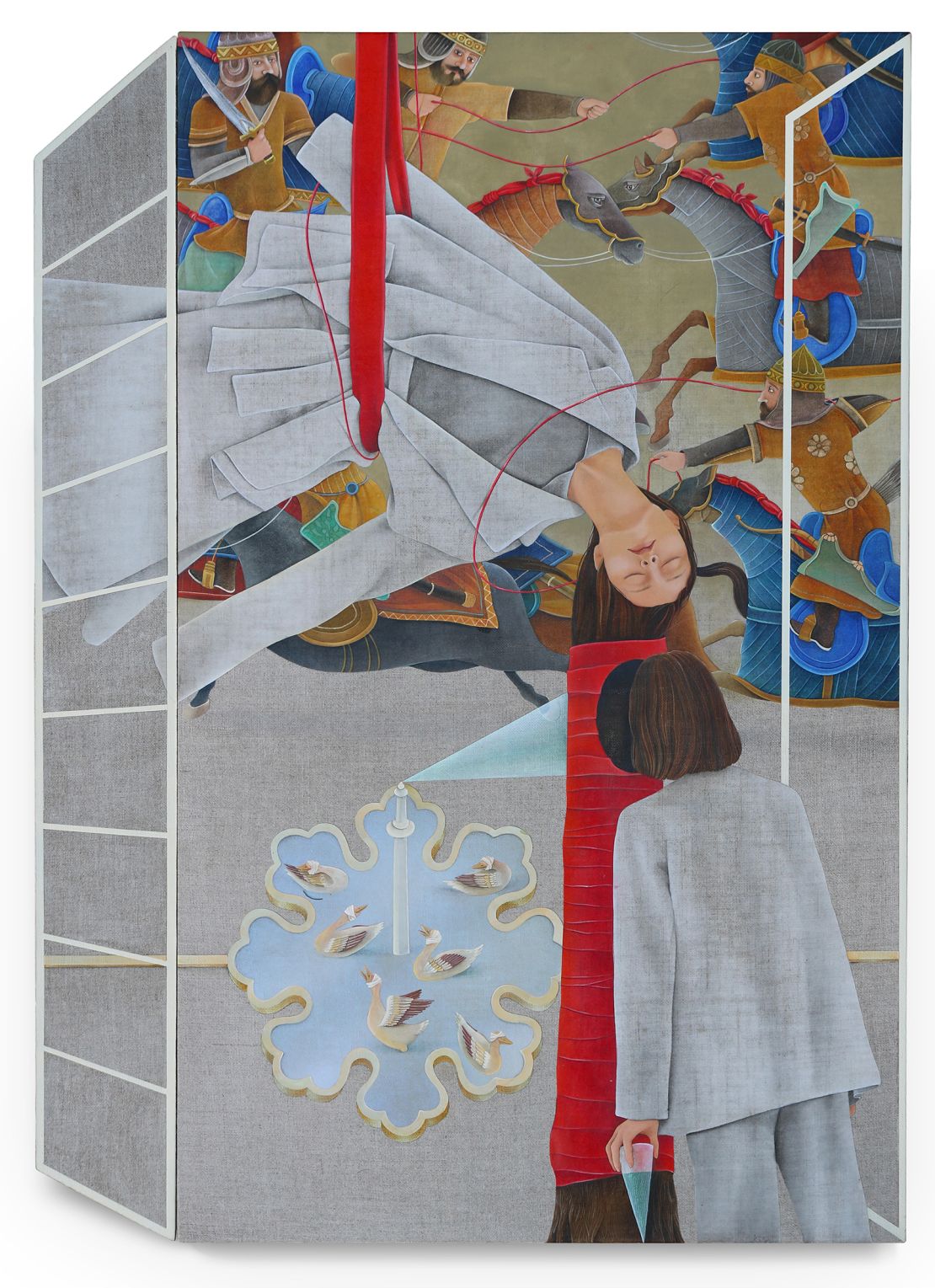
“I have scenes of battlefields where soldiers attack women. And now, on the streets, we see videos of these security forces (and a) level of cruelty as they attack the protesters,” she said. “I have some visual metaphors… but now they are literally happening.”
But Khosravi hopes that her subjects represent not just the experience of Iranian women, but any woman whose rights are threatened.
“Something in common between all of the (women in my paintings) is that they’re around the same age as me, or their hair color or features are, to some extent, similar to my own… because I am thinking about my own story and other women who have gone through the same,” she said. “But at the same time, I don’t want these figures to be too culturally specific. So anyone in any corner of the world can relate to their works based on their own experiences.”
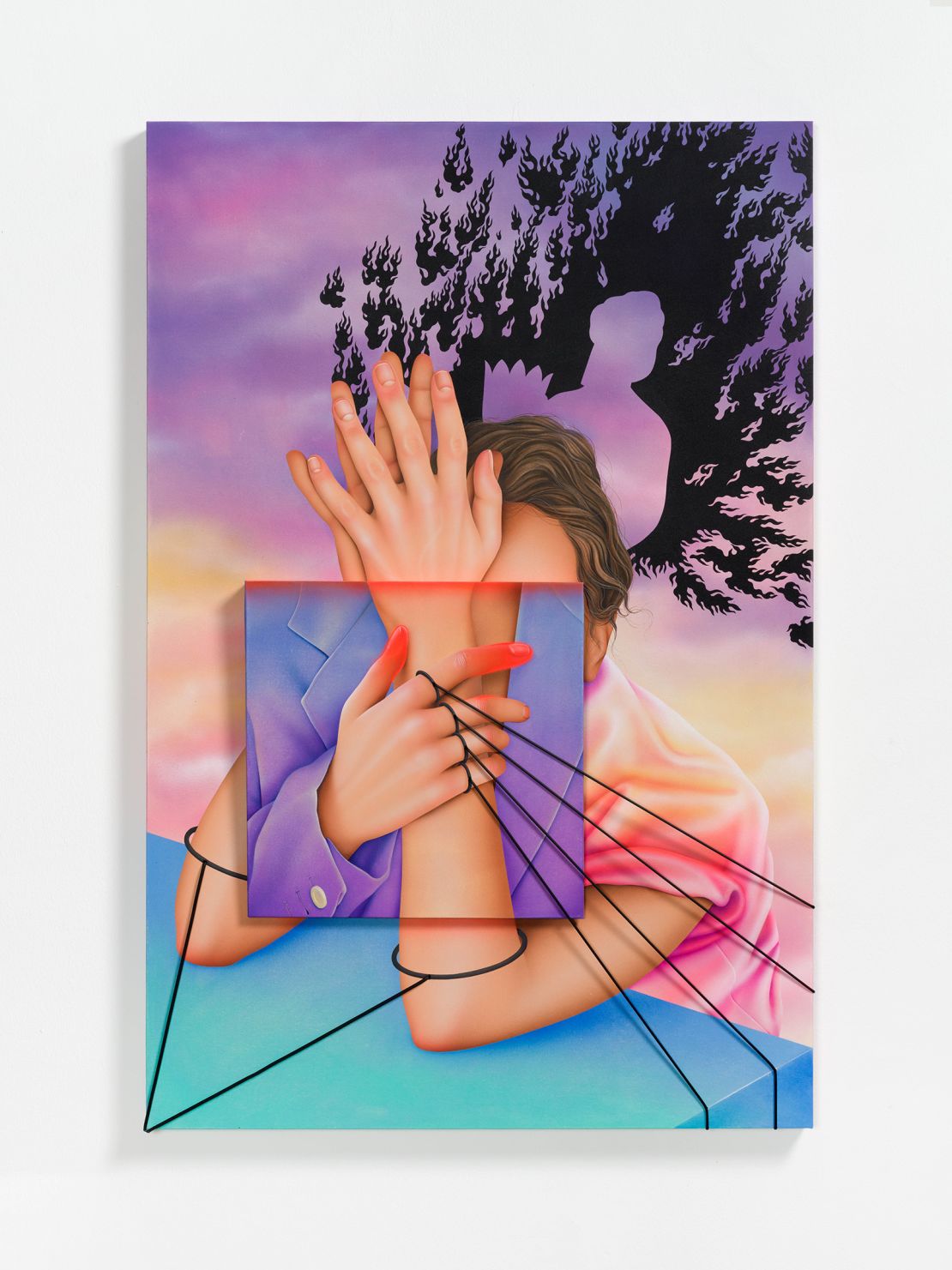
Now she’s sketching ideas for new paintings, responding to what she hopes are turning tides in her home country.
“At some point I had lost hope that maybe things would change, but now there’s this young energy, it’s very fascinating and I hope it leads to fundamental change,” she said.
Though the subjects in her portraits all have some degree of agency, she’s working on a new set of symbols that will evoke the strength of women taking on an entire government to claim autonomy over their bodies. “In light of all that’s going on,” Khosravi said, “I want to give the figures more power.”



